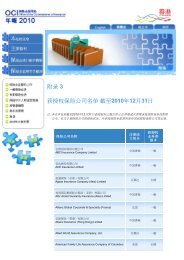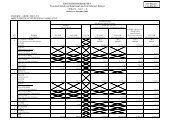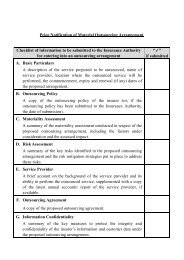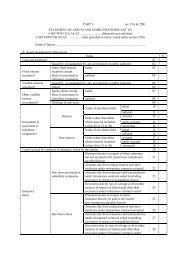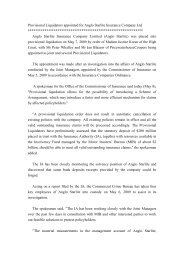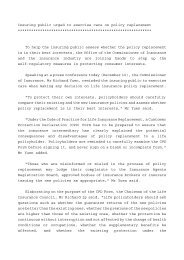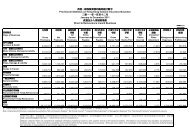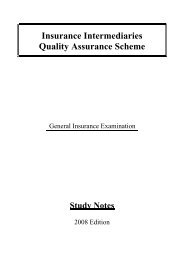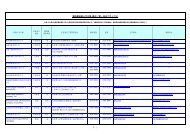Study Notes for the Long Term Insurance Examination (2011 Edition)
Study Notes for the Long Term Insurance Examination (2011 Edition)
Study Notes for the Long Term Insurance Examination (2011 Edition)
Create successful ePaper yourself
Turn your PDF publications into a flip-book with our unique Google optimized e-Paper software.
2 Not all life insurance policies can be par or non-par. <strong>Term</strong>insurance plans (see 2.1.1) are normally not on a participatingbasis.3 For discussions on distribution of policy dividends, pleasesee 5.2.7.(b)(c)(d)(e)(f)Competition: no insurer enjoys a monopoly position. What <strong>the</strong>market is charging cannot be ignored.Economic changes: extended times of affluence or recession willdoubtlessly have an impact on all product prices, includinginsurance.Public health: abnormal developments in this area (e.g. <strong>the</strong> AIDSepidemic) cannot be ignored in rating.Fiscal changes: a lasting increase in tax levels must be reflectedin higher premium rates (although this can only be <strong>for</strong> newclients).Company objectives and marketing strategies: if a company isdetermined to increase its market share, competitive premiumrating is surely one of <strong>the</strong> possible marketing strategies.1.3.2 Natural and Level Premium (Pricing) SystemsThese systems <strong>for</strong> life insurance premium calculations might well bedescribed as "ancient" and "modern", <strong>for</strong> reasons that will be clear shortly.1.3.2a The Natural Premium (Pricing) SystemThe natural premium system (or <strong>the</strong> natural premium pricingsystem) was used by some life insurers in <strong>the</strong> early days of <strong>the</strong> business.It was very logical, but it was doomed to failure because of built-infeatures which virtually guaranteed that it could not work long-term inpractice. Its features were:(a)(b)Premiums: <strong>the</strong>se were not to be constant throughout <strong>the</strong> policyterm, but individually calculated each year so that <strong>the</strong>y reflected<strong>the</strong> natural risk position (age, etc.) of <strong>the</strong> life insured at eachpolicy anniversary.Short-term consequences: with increasing age, <strong>the</strong>re is increasedmortality risk. Premiums <strong>for</strong> existing policies <strong>the</strong>re<strong>for</strong>e increasedevery year.1/13



